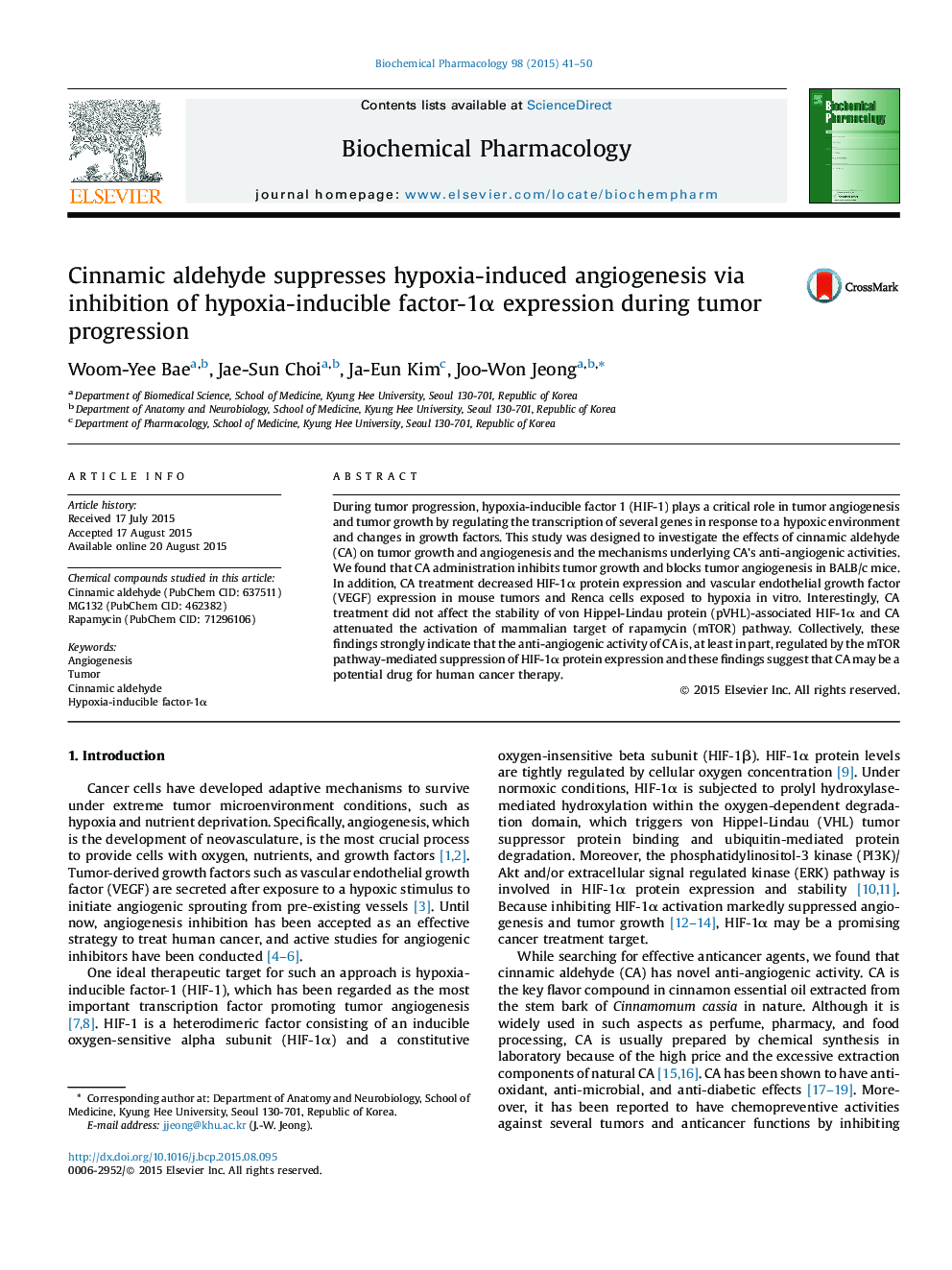| کد مقاله | کد نشریه | سال انتشار | مقاله انگلیسی | نسخه تمام متن |
|---|---|---|---|---|
| 2511939 | 1118303 | 2015 | 10 صفحه PDF | دانلود رایگان |
During tumor progression, hypoxia-inducible factor 1 (HIF-1) plays a critical role in tumor angiogenesis and tumor growth by regulating the transcription of several genes in response to a hypoxic environment and changes in growth factors. This study was designed to investigate the effects of cinnamic aldehyde (CA) on tumor growth and angiogenesis and the mechanisms underlying CA’s anti-angiogenic activities. We found that CA administration inhibits tumor growth and blocks tumor angiogenesis in BALB/c mice. In addition, CA treatment decreased HIF-1α protein expression and vascular endothelial growth factor (VEGF) expression in mouse tumors and Renca cells exposed to hypoxia in vitro. Interestingly, CA treatment did not affect the stability of von Hippel-Lindau protein (pVHL)-associated HIF-1α and CA attenuated the activation of mammalian target of rapamycin (mTOR) pathway. Collectively, these findings strongly indicate that the anti-angiogenic activity of CA is, at least in part, regulated by the mTOR pathway-mediated suppression of HIF-1α protein expression and these findings suggest that CA may be a potential drug for human cancer therapy.
Figure optionsDownload as PowerPoint slide
Journal: Biochemical Pharmacology - Volume 98, Issue 1, 1 November 2015, Pages 41–50
